Unpacking the Met’s Masterworks: Unpacking Fashion
Masterworks: Unpacking Fashion, at the Metropolitan Museum, only partially makes good on the promises embedded in its title. It succeeds in unpacking for the viewer the strategy its curators employ in building up their fashion collection as well as in tracing how that strategy has changed over the decades. At the same time, however, the curators of the show do not turn a critical enough eye to the sort of ensembles capable of conforming to the markers of quality that they espouse. In their power to choose whether or not to acquire artworks, curators can either canonize certain pieces and increase their status or leave them devalued and outside the canon. Although the implications of this privilege in reinforcing or shaping the fashion canon are not fully explored, Masterworks is still an interesting opportunity to see the department explain what makes a work iconic in its eyes and necessary to a timeline of fashion history.
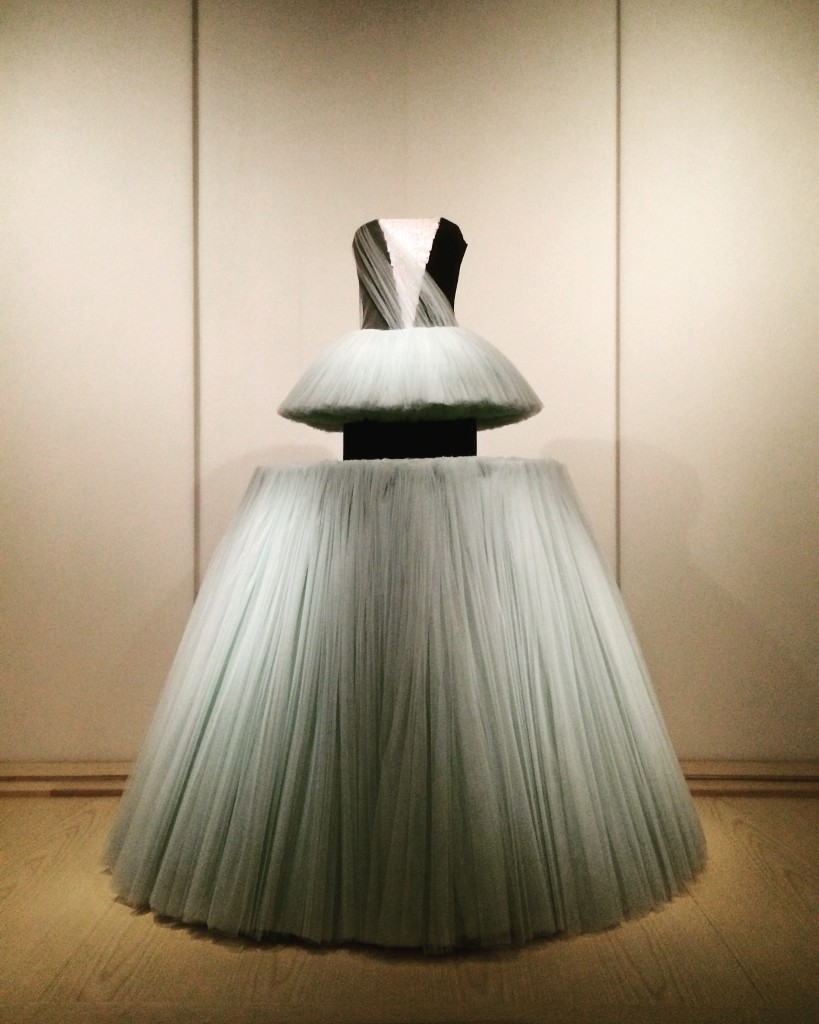
Highlighting approximately fifty recently acquired ensembles, Masterworks is an acquisitions show that plots a chronology of fashion that begins in the eighteenth century and continues into the present. Wall text introduces each century with an explanation of the Costume Institute’s current criteria for identifying a fashion masterwork demonstrative of the era. Rather than attempting an encyclopedic collection, as they did with past collecting practices, the current curators have turned to these criteria to collect works that they feel best encapsulate a certain period. It is clear from the ensembles on display that they are generally collecting to assemble exemplars of, generally, European and European women’s fashion. Fashion from outside this lens is regulated to mere influence, as in the “Eastern-inspired” Opera Coat by Paul Poiret.
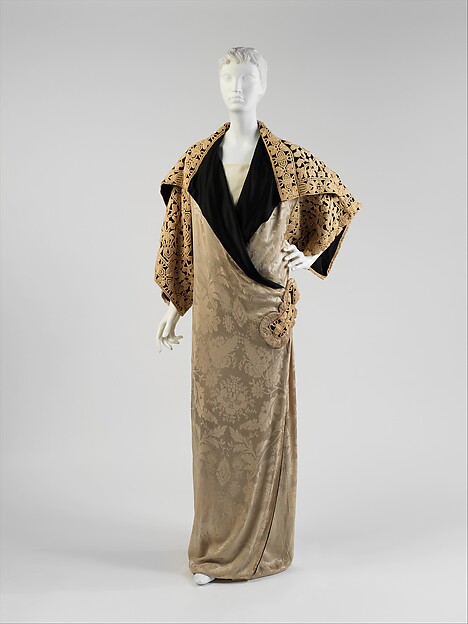
In the gallery devoted to the eighteenth century, the curators point out that they value a garment’s textile more than its sewing technique when evaluating works from this time. Such a focus on textile contrasts with the emphasis on dressmaking techniques and innovative silhouettes as paramount indicators of quality for nineteenth-century works. The collection of twentieth-century garments has revolved around individual designers who impacted the evolution of fashion.
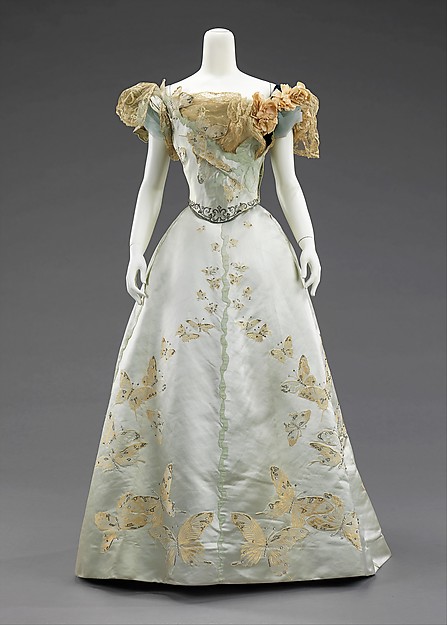
The curators have displayed the works on platforms resembling oversized packing crates, as per the theme. Often, the curators place a recently acquired masterwork beside another piece in the collection both to show how the piece complements previous holdings and to show continuities between the past and present of Western fashion. Thus, a silk Madeleine Vionnet evening dress from 1929 stands beside a 1999 silken dress by John Galliano and illuminates a dialogue between the two designers through silhouette.
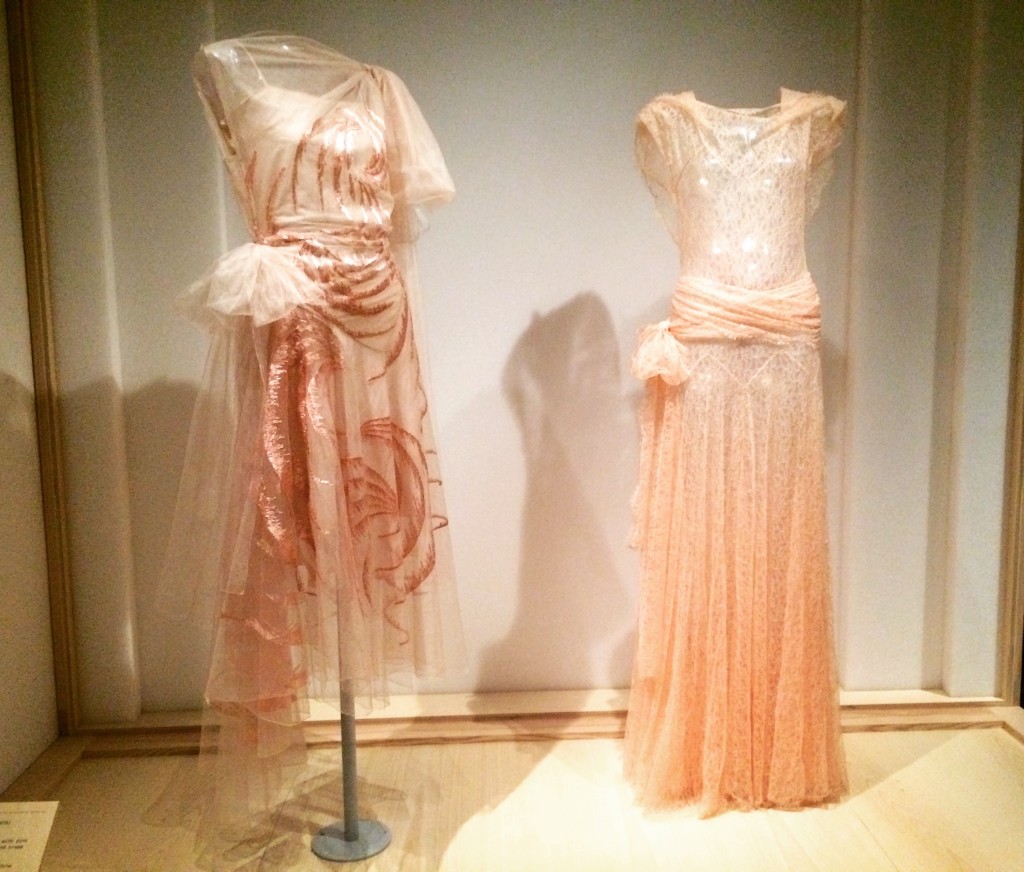
When Masterworks turns to the twentieth century, it makes intriguing connections between the fashion masterworks and aesthetics of the larger art world. The curators claim that the ensembles reflect and are representative of movements like Cubism, Futurism, and Surrealism. For example, that same Vionnet evening dress is described in terms of a Futurist aesthetic. Her process of turning the mannequin like pottery as she draped speaks to the Futurist dynamic movement of an asymmetrical form. Similarly, the tucks in Charles James’s “La Sirène” are tied to the erotic quality imbued the lobster by Salvador Dali, the dress playing with a Surrealist conjunction of womanly form with crustacean carapace.
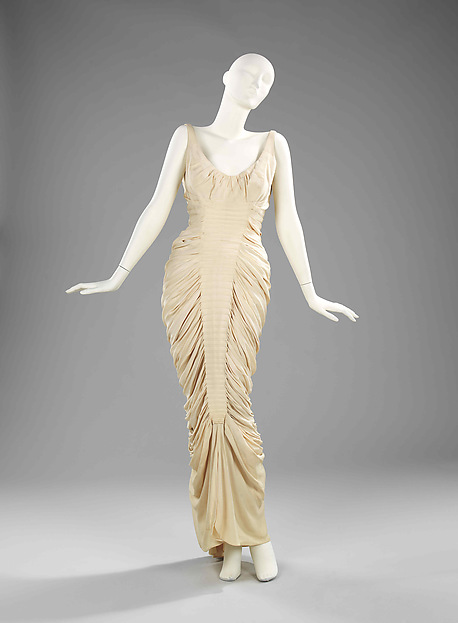
About halfway through the exhibition, one encounters a 1989 “Waistcoat” by Maison Martin Margiela. Constructed of white and blue porcelain plate shards, bound with steel wire, it is shown behind glass in a wooden frame. Hanging there, the piece would not be out of place in any exhibition simply focused on masterworks of contemporary art. With this exhibition, mixing glamour with pedagogy, the Costume Institute looks past the fabrics, leather, and silk on display to showcase the values that guide them in their collecting process. The self-reflection stops short of any gaps these values might create, but the peek in on the curators’ process is still a worthwhile one to experience.
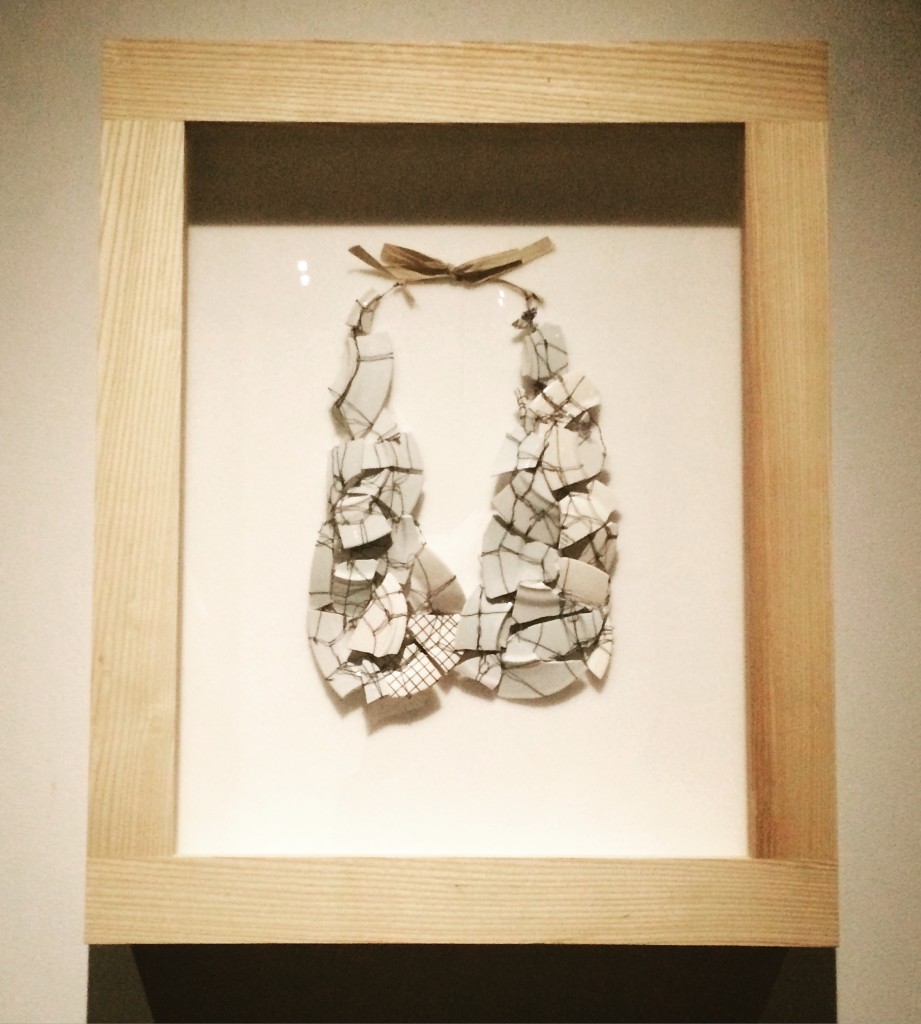
Gabriella is a senior at Fordham College Rose Hill. She is double majoring in Art History and English, with a focus on Modernism.